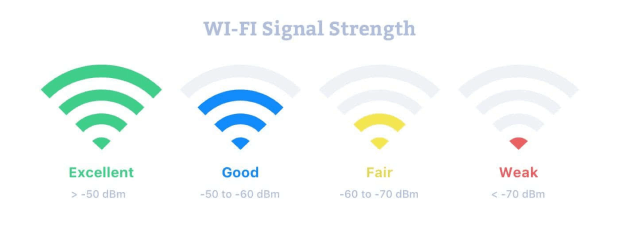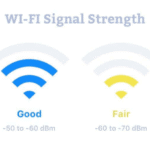
Income tax is a difficult fact that each salaried worker within the taxable bracket has to deal with. It has to be paid. Despite this, it’s not unusual to find humans no longer making wise and timely investments to minimize the effect of the tax. The reasons for the same are both a lack of understanding of the law and a lack of time.
Sumeet Khurana, Director – Direct Tax, Lakshmikumaran & Sridharan, advised Moneycontrol that all the salaried individuals should follow the statutory provisions of claiming the benefit in the right manner as mentioned under the regulation. “If they have likely queries that the tax government may also improve whilst scrutinizing the declare, they have to clarify right now with the advisers or concerned authority even as submitting deductions to take tax benefit,” he stated.
Salaried personnel need to know that the Profits Tax Act, 1961, gives various tax-saving possibilities which might be discussed below:
= Lease allowance (HRA) is a full-size constituent of a person’s profit structure. It is crucial to know that if a worker is staying in a rented lodging, HRA can be claimed as tax-exempt, in keeping with the prescribed regulations.
Divya Baweja, Partner, Deloitte India, instructed that effective tax year 2018-19, the government has done away with the exemption available closer to scientific expenditure and shipping allowance. These two allowances have been compensated by creating a standard deduction of as much as Rs 40000. “The alternate-off among the 2 has benefited the individuals with additional tax-exempt earnings of Rs 5800,” he stated. The law affords diverse tax saving avenues, e.G. Funding made towards Public Provident Fund, Life Insurance Corporation top rate, National Savings Certificate, Sukanya Samriddhi Yojana, reimbursement of housing loan main, Equity Linked Savings Scheme, five-year constant deposits with banks and put up office, tuition charges paid for children’s schooling, and so on. Are eligible for deduction up to as much as most of Rs 150000.
=12 months may be claimed via employees contributing to the National Pension System (NPS). Contribution to NPS was restricted to the best authorities’ personnel until 2009. The advantage inside the palms of the worker is further to the deduction, which a company claims is closer to the employer’s percentage of contribution to NPS.
Divya Agarwal, Senior Manager with Deloitte Haskins and Sells LLP, advised that personnel can declare a deduction of up to Rs 25,000 for a fee made towards medical insurance taken for self, spouse, and children. = In the direction of medical health insurance is likewise eligible for a tax deduction. “In addition, deduction of Rs 50,000 may be claimed for medical health insurance taken for mother and father aged 60 years or above,” she brought.
= To offer impetus to studying, a specific deduction is available for individuals who have taken an education mortgage for better studies. The deduction may be claimed toward hobby paid on such loan for 8 tax years. However, the primary mortgage interest no longer qualifies for a deduction.

= A critical tax-saving tool is the hobby factor forming a part of EMIs (equated monthly installments) paid towards home loans. While computing profits under the top residence property, homeowners can declare a deduction of a maximum of Rs 2 lakh annually for self-occupied assets. In the case of let-out belonging, the deduction can be claimed for the complete interest paid. Tarun Garg, Manager with Deloitte Haskins and Sells LLP, informed that effective tax year 2017-18, set-off of house assets loss against income under other heads is constrained to Rs 2 lakh. “Balance loss may be carried forward for 8 tax years and set off against house belongings income earned in that year,” he said.
Did you already know the federal income tax celebrated its 92nd birthday on October 3rd?
In February of 1913, the Sixteenth Amendment was ratified with the aid of the desired two-thirds of the states. The amendment gave Congress the power to “lay and collect taxes on earnings, from something assets derived, without apportionment many of the several states, and without regard to any census or enumeration.” On October 3, 1913, Congress passed the Revenue Act of 1913, which created the first permanent federal income tax.
Congress has made previous attempts at instituting a federal income tax. The first, in 1861, became an emergency measure to fund the Civil War and changed into repealed in 1872. In 1894, in reaction to lawsuits that an immoderate reliance on price lists as a source of sales triggered the charge of imported goods to upward thrust, Congress once more enacted a profits tax regulation. The Supreme Court ruled it unconstitutional in 1895.
In celebration of this unique event, here are some statistics about the first actual Form 1040:
* The tax applied to salaries and wages, interest, dividends, rents, royalties, pensions and annuities, earnings from estates, trusts, sole proprietorships and partnerships, and gains from the sale of maximum styles of belongings.
* The salaries and wages of a nation and local government personnel were exempt from earnings tax.
* Interest from federal, in addition to country and local, authorities has been exempt from income tax.
* Deductions had been allowed for “non-public” interest, federal excise taxes, taxes paid to state and local governments, casualty and robbery losses, horrific money owed, commercial enterprise expenses, and depreciation of assets used in an enterprise.
* There turned into an exemption of $3,000.00 for single huindividualsnd $four 000.00 for married couples.
An additional or “extraordinary” tax of from 1% to 6% changed into applied to income, along with dividends, more than 00.00.* A “regular” tax of one% changed into carried out to the primary $20,000.00 of taxable profits. Dividends had been exempt from this “normal” tax.












